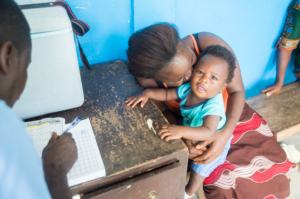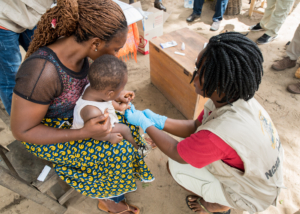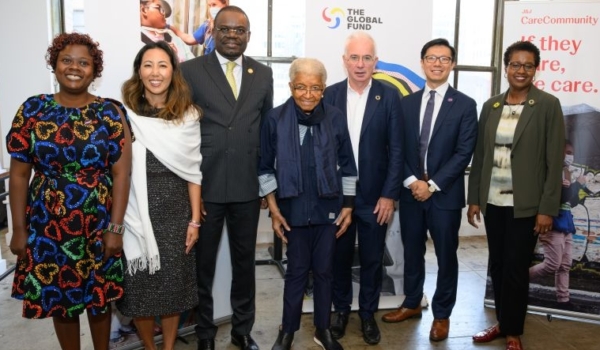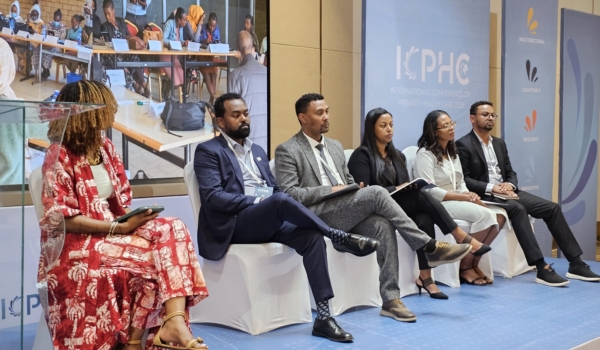Our team has recently released survey results from Rivercess County, Liberia, offering a look into the impact of the National Community Health Assistant Program on women and children served in our directly managed county.

Vaccinator Sam Gbordoe vaccinates baby Nelson at Boegeezay Health Center in Rivercess County in 2019.
Community health workers in Rivercess County are deployed through the Government of Liberia’s national program, which aims to bring lifesaving primary healthcare within reach of patients living at the last mile. The survey is conducted to measure the deliver level of our Theory of Change, aimed at demonstrating the effectiveness of community-based care. “The survey looks at health and demographic data for the purpose of doing three major things,” explains Richard Ngafuan, Deputy Director of the Monitoring, Evaluation, Research, and Learning, Liberia team at Last Mile Health. “It’s meant to assess the health status of the population we serve. It also guides program design and prioritization of healthcare programs, and evaluates the impact of the programs we conduct, especially in our managed counties.”
Last Mile Health has conducted the survey annually since 2015. The National Community Health Assistant Program began to roll out in 2016, and our most recent results–from 2021–show several encouraging trends:
- In 2015 only 43% of children under age 5 who had a fever received a rapid diagnostic test for malaria. This figure increased to 91% in 2021. Among children who tested positive for malaria, the percentage receiving appropriate treatment rose from 82% to 93%.
- Between 2015 and 2021, the percentage of children aged 12-23 months with zero vaccinations has decreased from 32% to just 5%. The number of children up to date on all recommended vaccines has increased from 5% to 25%.
- Between 2015 and 2021, there was a 2-3x increase in the percentage of children who completed Penta 1-3, OPV 1-3, and BCG–key vaccination rounds for polio, TB, Diphtheria, Pertussis, Tetanus, Hepatitis B and Haemophilus influenza b.
- Among women who gave birth in remote Rivercess County in 2015, only 52% delivered in a health facility. By 2021, that figure had risen to 93%.

Community health worker Laura Gbee performs a rapid diagnostic test for malaria on a young patient in Rivercess County in 2018.
While these promising results are just a snapshot, they offer important insights on how the national program can continue to be strengthened to ensure community health workers are best equipped to provide effective primary care. We look forward to continuing this essential work with the Liberia Ministry of Health to realize a world where mothers and their children are receiving the high-quality care they deserve right in their communities–no matter how remote.




